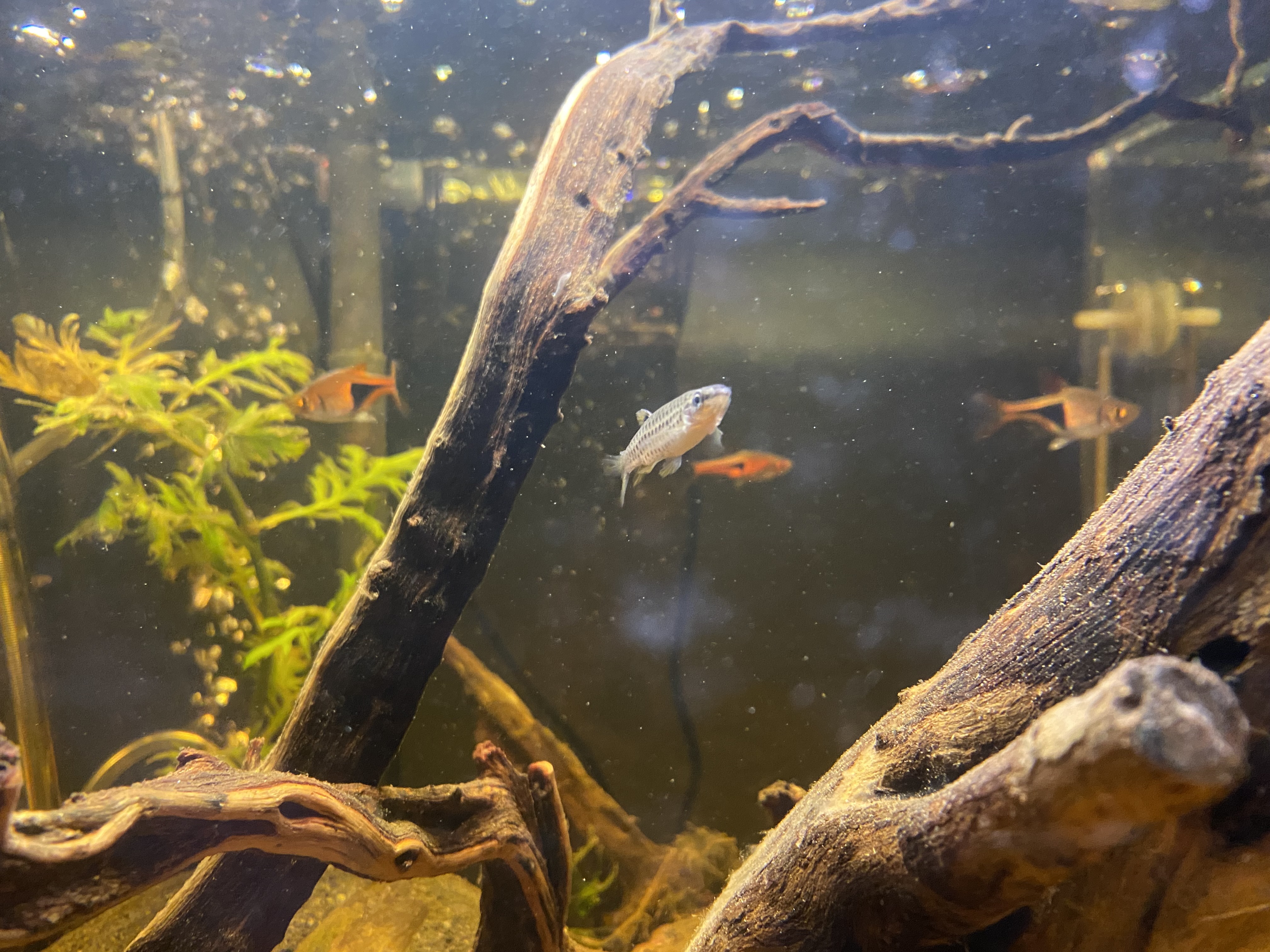jmacaddy36
New Member
- Messages
- 15
I have a 25 gallon cube with 2x A. panduro, 3x Copella sp., and 7x Rasbora. The reason I only have 3 splash tetra is because that is all the store had.
Recently, the splash tetra have become aggressive between themselves and against the rasbora. The dominant male is the only one being agressive. I think the issue is that I have 2 males and only one female. The dominant male picks on the smaller male and the smaller male hides behind the heater all day.
My first question: how bad would it be to put the bullied male in another tank by itself (with other community species) at least temporarily?
I want to get more to get more of the splash tetra but I am not confident in what species they are. The store had them labeled as “Arnoldi Splash Tetra”, but they don’t look like what I have seen on google. The closest I have found is copella natteri and copella sp. barcelos.
Can anyone tell me what these are?
If so, where can I get more?

Male:

Female:

Thanks!
Recently, the splash tetra have become aggressive between themselves and against the rasbora. The dominant male is the only one being agressive. I think the issue is that I have 2 males and only one female. The dominant male picks on the smaller male and the smaller male hides behind the heater all day.
My first question: how bad would it be to put the bullied male in another tank by itself (with other community species) at least temporarily?
I want to get more to get more of the splash tetra but I am not confident in what species they are. The store had them labeled as “Arnoldi Splash Tetra”, but they don’t look like what I have seen on google. The closest I have found is copella natteri and copella sp. barcelos.
Can anyone tell me what these are?
If so, where can I get more?
Male:
Female:
Thanks!
